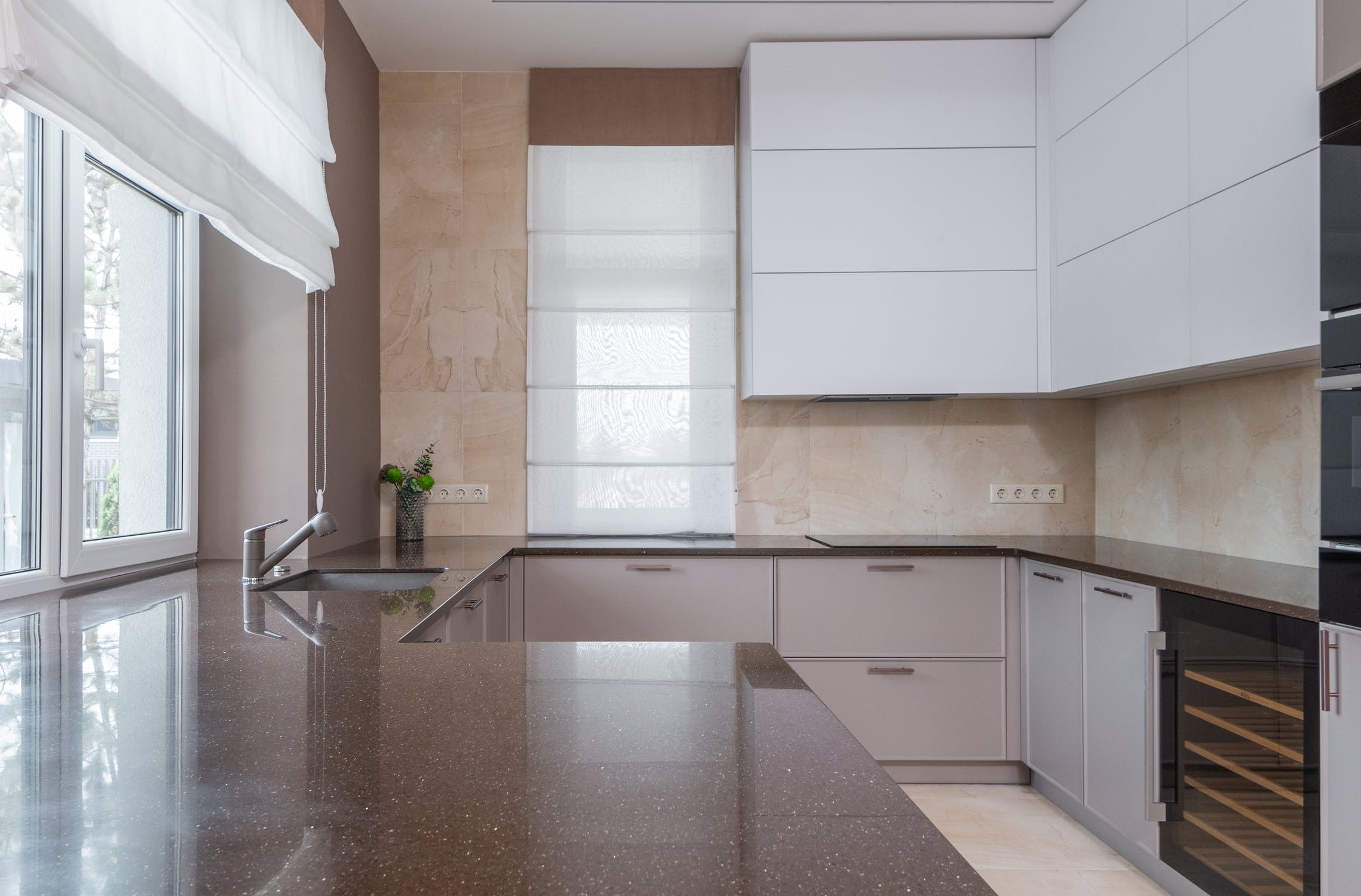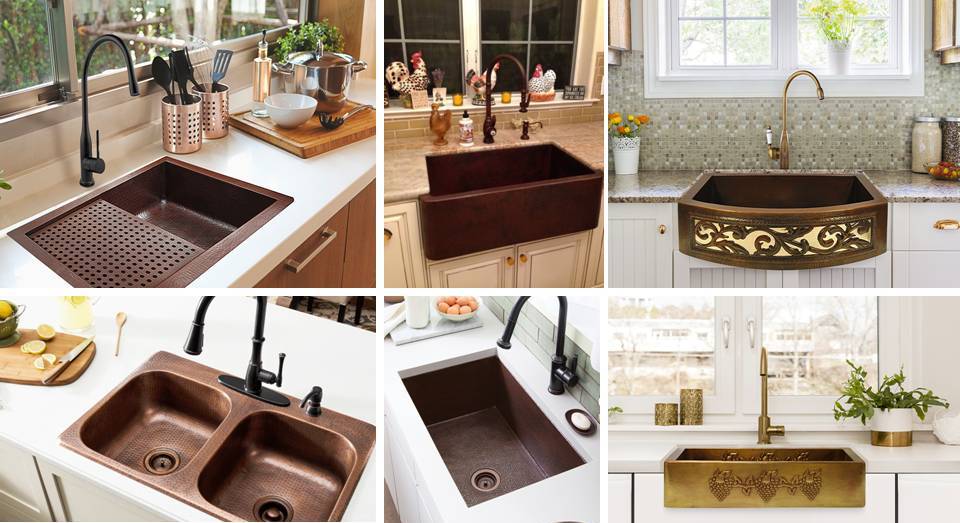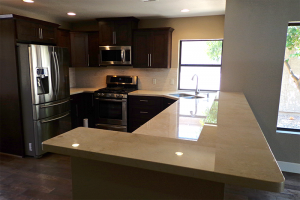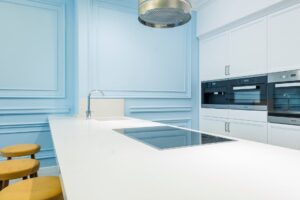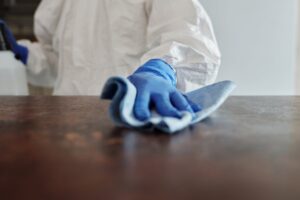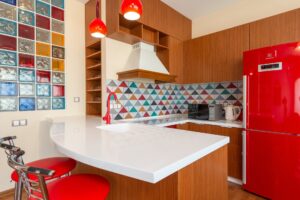The materials used by designers for kitchen and island countertop have advanced well beyond granite in recent years.
Kitchen countertops have a hard job since they are the location of all food preparation. They must be elegant, long-lasting (stain-, scratch-, and heat-proof), and, in the ideal situation, inexpensive. With so many possibilities available today, it makes sense that selecting a countertop material is difficult.
Although these natural materials have long dominated the kitchen, solid-surface counters like Corian are becoming increasingly common. Then there is engineered quartz, comprised of ground quartz and resins and includes brands like CaesarStone, Celador, and Silestone.
And suppose you’ve already ruled out concrete because you can recall the late 1980s when concrete countertops were poured on-site. In that case, modern concrete counters are prefabricated and available in various colors and finishes.
What Is the Best Kitchen Countertop
There are several factors to think about when selecting kitchen countertops. Although designing a kitchen can be laborious, seeing your finished product—hopefully precisely as you had envisioned it—is tremendously satisfying.
You can locate the ideal kitchen countertop for your house by taking the time to consider your alternatives and choose what you need and desire.
The first step to creating a helpful kitchen is selecting a countertop surface material that fits your lifestyle. After all, where the cooking truly takes place is on your countertops. You might also say that your counters are the focal point of any kitchen since they occupy a lot of visible space. The materials and options you selected – whether handcrafted tiles or unbreakable composite slabs – are designed as much for practicality as aesthetics.
Nevertheless, picking the ideal countertop might be challenging. I have a lot of possibilities, so how can I choose which stone I want? And what distinguishes quartz from quartzite? Now that I think about it, what precisely is quartzite? There is plenty to learn about the many color possibilities for natural, engineered, and artificial materials.
Picking the Best Material
Everything you need to know about countertops is in the section that follows. But regardless of the type of material you choose, Granite Dude offers the following checklist of considerations to keep in mind before you buy in or fall in love with any particular thing:
- Design and color (the style statement you want to make)
- Size and form of the object (thickness, length, and edge style of the slab)
- Including in the backsplash (if the materials will match)
- island in the kitchen (whether or not you want one, and matching it with the counters)
- Durability and maintenance-friendliness (consider how you’ll use the room)
- Total ownership costs (not only initially but also future costs for maintenance).
Read on to learn how to decide what is ideal for your space and budget while keeping that in mind.
LAMINATE
This nonporous acrylic is available in several styles, making it perfect for people who want to make a daring statement with color and pattern through a monochrome aesthetic or fun design ideas. It can take on any design idea. Despite being more durable thanks to new technologies, laminate is still an affordable alternative. It’s a fantastic option for someone on a tight budget. The drawbacks? Don’t lay a hot pan directly on it since it won’t withstand heat as well as other choices, and over time, it could start to chip or peel.
TILES
Tiles are a fantastic backsplash option, but they may also be a terrific choice for countertops. Tile countertops are great if you want a classic aesthetic and something cheaper. The drawback is that they frequently need to be re-grouted to keep clean. Although white grout is the most apparent option, there’s an entire grout spectrum out there. However, tile is more heat-resistant so that it will hold up better to hot cookware and plates. You may choose.
SOLID SURFACE
Most Interior designer defines a solid surface as “an artificial stone, generally a blend of natural materials (like stone) and an acrylic bonding agent.” Solid surface “will turn aged and worn out,” he claims, but it’s still quite durable, unlike actual stone, which develops a patina over time. And resistant to the majority of cleaning agents! Additionally, it is among the cheapest countertop solutions.
QUARTZ
Quartz is the best choice for the fuss-free chef because it doesn’t need to be sealed or polished and has double the impact resilience of natural stone. However, it is still somewhat heat-sensitive, so you shouldn’t place hot cookware directly on it.
Quartz countertops are made by combining quartz granules with resin and polymers to produce a surface that is incredibly durable and resembles genuine stone. Compared to natural stone choices, this mixture of natural stone and synthetic resins is more resilient to household cleaners and chemicals (so you can keep surfaces looking pristine at all times). Some premium quartz materials can cost as much as genuine quartz. Quartz is best for the kitchen to replicate the appearance of marble yet withstand daily usage.
TERRAZZO
Chips of marble, quartz, granite, glass and other materials are combined to create terrazzo, which is then poured into a chemical resin mold. It was highly fashionable in the 1980s and saw a rise in popularity in 2017, demonstrating that it is an unanticipatedly ageless fashion. It works well as a continuous surface that runs from worktops to floors. Tiles made of terrazzo are also available in varying sizes.
COPPER
Copper worktops are undoubtedly unique and are arguably less common than other countertop materials, but they are certainly growing in popularity. Made to order, they can be expensive, although not as expensive as natural stone. They impart a certain quality that is impossible to replicate in any other material, giving the impression that you are holding something unique and practical all in one.
BUTCHER BLOCK
People may use a butcher-block counter’s surface for food preparation, which is reasonably practical. Occasional oiling is worthwhile if you enjoy the cozy, rustic appearance. Use a specific finish to make the surface more heat- and water-resistant.
WOOD
Alternately, you might use traditional wood counters. Wood destroys germs more quickly than any other surface, making it the perfect surface for a kitchen. In addition to having a conventional and timeless appearance in almost every kitchen, wood surfaces, when purchased from reliable suppliers with premium finishes, are also quite simple to maintain. Although they will eventually exhibit some wear, sealing them makes them more resilient. It depends on where you get it because there is an extensive range in price.
CONCRETE
Concrete may be poured to order or bought premade for a decidedly industrial appearance. It is stain-resistant and not for perfectionists, but a sealer will decrease this. It is more expensive than laminate but less expensive than marble. To “hack” the effect, laminate may also be painted with concrete paint, and there are also ceramic slabs with a like appearance.
QUARTZITE
This precious and sought-after natural stone, which should not be mistaken for quartz, resembles marble and onyx in appearance. Quartzite is one of the more heat-resistant and scratch-proof natural rocks, along with granite. The sealing procedure used on the natural stone after it has been collected is sometimes referred to as “engineered quartz” or “engineered stone.” Because quartzite countertops can be porous, they aren’t usually the ideal choice in places that get a lot of traffic.
GRANITE
Granite may be relatively expensive because it is one of the hardest natural stones. As a result, it’s also the most resilient, making it ideal for family kitchens with heavy usage but needing a touch of elegance. Additionally, it is among the most heat- and scratch-resistant natural stones on the market. For granite to remain durable, sealing will need to be done frequently. If you’re wondering where it originates, granite is essentially hot, molten lava that has crystallized.
MARBLE
Almost every natural stone we see now is referred to as marble. However, it is rather particular. It’s interesting to note that marble contains many minerals, including calcite, graphite, and others. One of the softer natural stones, its durability is a little bit lower. There’s no doubting the opulent appearance, but it is prone to etching.
ONYX
Onyx is a transparent and iridescent stone created in limestone caverns by water dripping, resulting in stunning, distinctive veining. It comes in various vivid colors, including pink, green, orange, and others. It is incredibly soft, even softer than marble (though not as smooth as its cousin, calcite, which is adorned with crystals), making it a little less resilient.
Though wear and tear can be anticipated over time, it may become more durable and resistant with the correct sealer. As it originates from limestone hot springs and caves, travertine has a very similar chemical composition. The only naturally occurring stones that can be backlit are calcite, travertine, and onyx, which makes their already alluring radiance much more attractive.
Any kitchen may be made more beautiful by replacing a countertop that has been burnt, burned, soiled, or is simply unsightly. Fortunately, there are several alternatives available in a variety of pricing ranges. As little as $5 per square foot might be spent on a brand-new laminate countertop. Or you might easily spend ten times as much on recycled glass, quartz, or granite.
What Are the Features of Different Countertop Materials?
Although there were differences in performance across rival brands of each kind, it is still advisable to shop for the lowest price on the kitchen countertop material you choose. See the numbered items below for the benefits and drawbacks of each kind.
1. Quartz
Advantages: It has the appearance of stone yet needs less upkeep. Quartz, a mixture of mineral, color, and resin, was resistant to hot pots, serrated knives, abrasive pads, and most stains. It has designs that resemble granite and marble as well as brilliant hues.
Cons: You’ll need a professional to fix chipped edges and corners. Helpful are rounded edges.
2. Granite
The natural material is distinct in every slab, and expensive hues and veining add to the value. In our experiments, granite was unaffected by heat, cuts, or scratches. Choose the finish you desire. Matte and polished surfaces both repelled most stains when properly sealed.
Cons: To prevent stains, regular resealing is required. Like quartz, edges and corners are prone to chipping and require professional repair.
3. Marble, Limestone, and Soapstone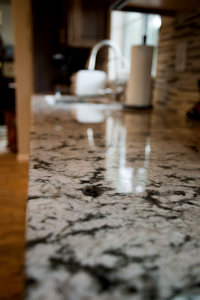
The advantages of soapstone over granite are its lower prevalence and superior heat resistance. You can use mineral oil and fine sanding to fix minor scratches. Marble and limestone are traditional building materials. In addition, limestone resists heat and has a natural stone appearance without noticeable veining or graining.
Cons: Soapstone is readily scratched, scraped, and nicked, and certain stains are too stubborn to remove with water. These problems apply to marble and limestone, and heat destroyed our marble.
4. Laminate
Pros: Affordable, simple to install, and far more aesthetically pleasing than you would recall owing to modern printing technology and decorative edges.
Cons: Laminate can be permanently damaged by cutting directly on it; therefore, use a cutting board.
5. Solid Surfaces
Benefits: Because the seams are so barely noticeable, they may be used for the countertops, sink, and backsplash, giving the appearance of a continuous surface. It is also available in a range of colors and designs. Its hue, just like quartz, won’t deviate significantly from the store sample. Most stains won’t penetrate solid surfaces, and minor nicks and scratches may be fixed.
Cons: A cutting board is essential since it cuts and scrapes readily.
6. Repurposed Glass
Pros: It has a fun, modern appearance because the large shards and the finely ground glass help it look less cluttered. Most glass countertops are resistant to heat, cuts, stains, and scratches.
Cons: It has the tendency to experience little break when exposed to too much heat.
7. Butcher Block
The finish matters, but it provides warmth and is simple to install and repair. Stain resistance increases when the varnish is used but decreases when using penetrating oils.
Cons: While you may readily repair them with sanding, nicks and scratches might happen.
So what is the best kitchen countertop material?
Since it varies on personal preferences and requirements, there is no conclusive response. However, some of the most common choices include concrete, laminate, quartz, and granite. Be careful to complete your study before deciding on a final surface because each kind has different advantages and disadvantages. Contact Granite Dude to know what is the best kitchen countertop for you!

